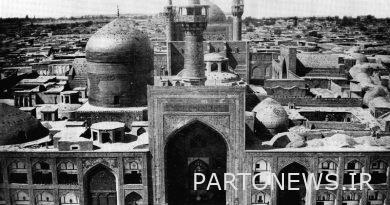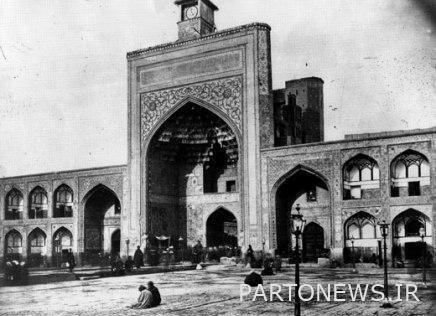Most of the development of the shrine occurred during the Safavid kings

Many masters and artists, due to their skill, wisdom and using sciences such as architecture, painting, history, art and mythology, have symbolically decorated spaces such as scenes, porches and domes in order to establish the foundations of Iranian culture and Islamic myths. Rajabali Labbakhaniki, a researcher and archaeologist in Khorasan, in an interview with ISNA about the history and architecture of the Razavi shrine, said: Prosperous prosperity and grazing of the Razavi shrine spread.
He added: In order to realize the ideas of the powerful Safavid king, famous architects, artists and calligraphers gathered in Mashhad and created a masterpiece. For example, on the enamel inscription on the stem of the dome, it is written that when Shah Abbas came to Mashhad on foot from Isfahan in 1010 AH, he started gilding the dome and the gilding work was completed in 1016 AH. The calligrapher of the inscription was Alireza Abbasi and its goldsmiths were Kamaluddin Mohammad Nazel Yazdi and Mohammad Baqir Ibn Haj Zaman Jirani.
This Khorasani researcher continued: Shortly after the gilding of the dome, by the order of Shah Abbas, a box was installed above the shrine of Imam Reza (AS) with small and large gold leaflets written in the third and Nastaliq lines of Alireza Abbasi.
Labafkhaniki pointed out: After those years, several buildings and architectural spaces were built near the tomb of the eighth Imam (AS). One of those spaces was the porch of Tohidkhaneh, which was allegedly built at the request of Mullah Mohsen Feyz Kashani in the north of the tomb.
He said: Another porch, which is known as the dome of Allah Verdikhan, was built in the east of Tawhidkhaneh and by the order of Allah Vardikhan, the famous commander of Shah Abbas, and he was buried in the same place after his death. The feature of this building is its stunning beautiful decorations that are formed with mosaic tiles.
This Khorasani researcher added: On the magnificent entrance on the east side of the building, there is an inscription on the background of flower and bush tiles, on which the architect named Amir Ibn Haj Mahmoud Nazarani and the date of the year 1023 AH can be seen, but the most important event in the Shah’s era. The first Safavid Abbas took place in the holy shrine, the expansion and reconstruction of the old courtyard (courtyard of the Islamic Revolution).

Antique courtyard during the Qajar period
Labbakhaniki stated: By the order and supervision of Shah Abbas, the wall on the north side of the courtyard was built with a corridor and rooms above it and large entrances and porches to the east and west and a street along the east to west that led to the old courtyard on both sides. On the south side of the courtyard and in front of Amir Alishir Navai porch, another porch called Abbasi porch was built, which in terms of structure and decoration is very similar to some spaces of Shah Mosque (current Imam Mosque) and Sheikh Lotfollah Mosque in Isfahan, and artists and calligraphers such as Mohammad Reza Emami, in whom the mosques have performed, has decorated the Abbasi porch and other porches of the old courtyard with various patterns and calligraphy.
He continued: Iskander Beyk Munshi (historian) wrote about the expansion of the ancient courtyard. He removed it and expanded the courtyard so that the porch was exactly in the middle of it. He also built three porches, one in the south and in front of Amir Alishir porch and two in the west and east of the old courtyard. In addition, he built two streets between the east and west gates of the city, which led to the courtyard from both sides. Since the people of Mashhad and the pilgrims were suffering from water shortages, Shah Abbas ordered the construction of a river to bring water from Golsab spring (now Cherry spring) and other aqueducts to the city. The creek was brought to the courtyard from the middle of the street in such a way that after filling the middle pond with water, it flowed to the western part of the street.
This Khorasani archaeologist stated: During one of Shah Abbas’s trips, which lasted three months, other side measures were taken in the holy shrine. For example, Mullah Jalal, the astronomer, took the opportunity to open another door in the dome of the Imam from the bottom by the order of Shah Shah, and installed a pair of precious jewels on it. Build a large one on the same dome and secure it with iron windows. After this action, the inside of the dome became very bright and clear.
Labafkhaniki added: The spiritual and provincial attraction of Hazrat Reza (AS) for the Safavid kings, especially Shah Abbas I, was so great that despite the danger of Uzbek invasion and successive occupations of Mashhad, he was not unaware of the shrine and most of this threshold was developed during his reign. .

